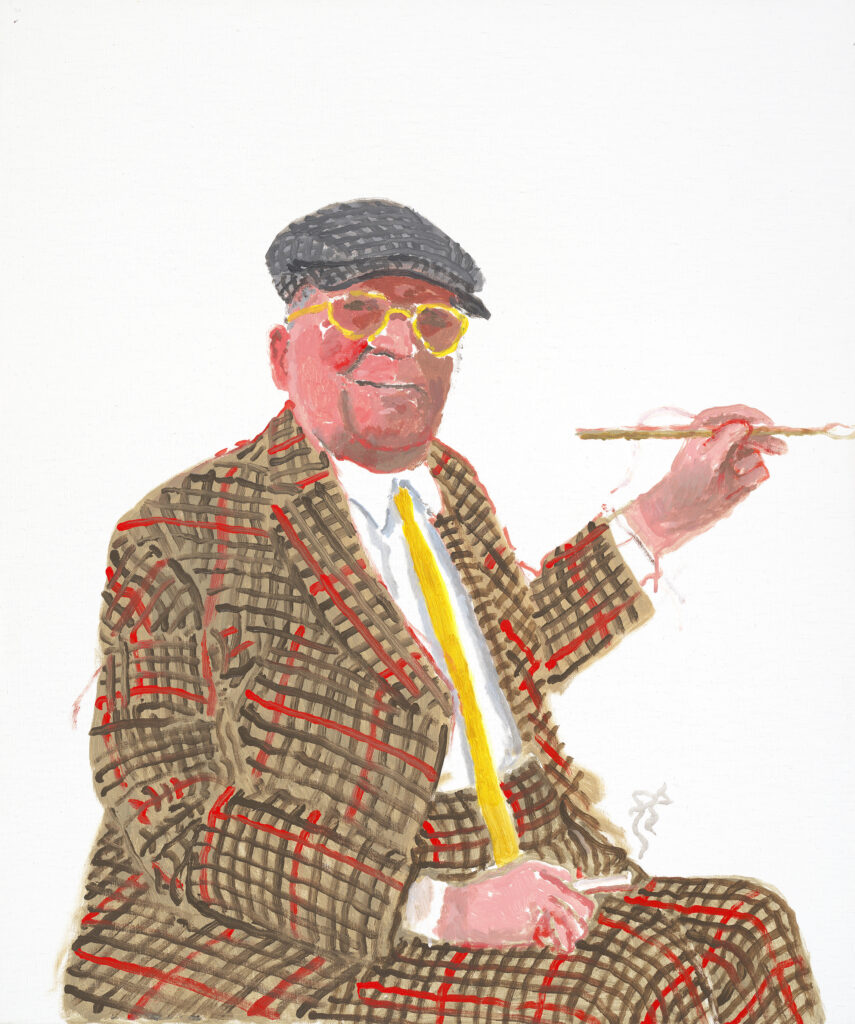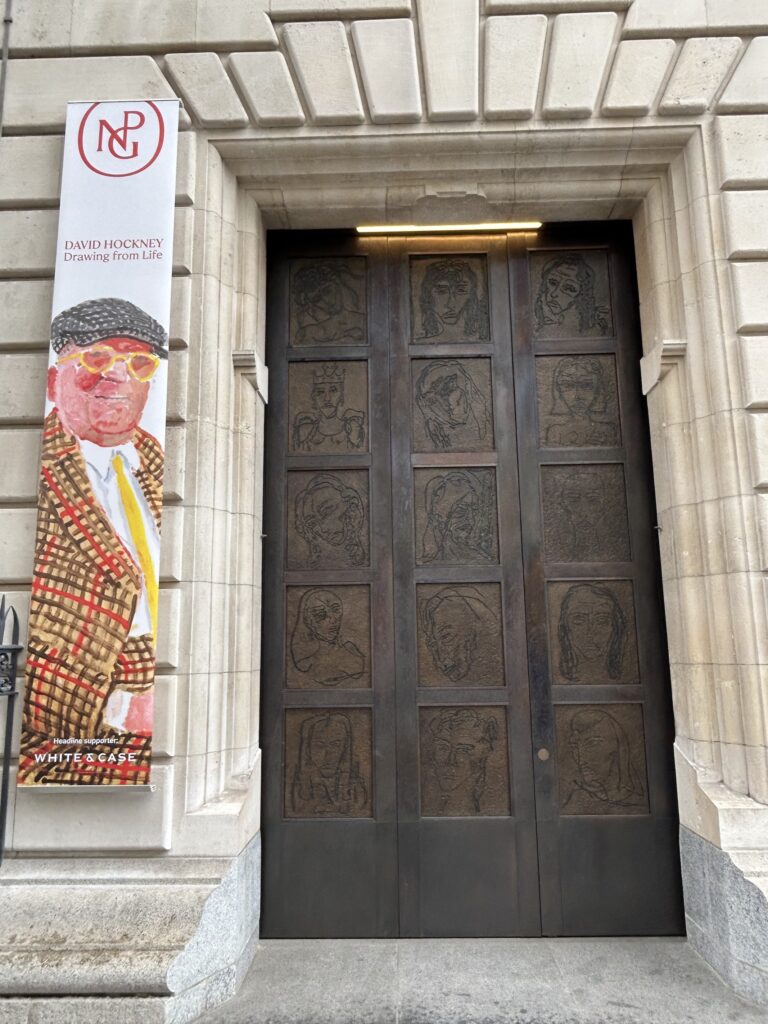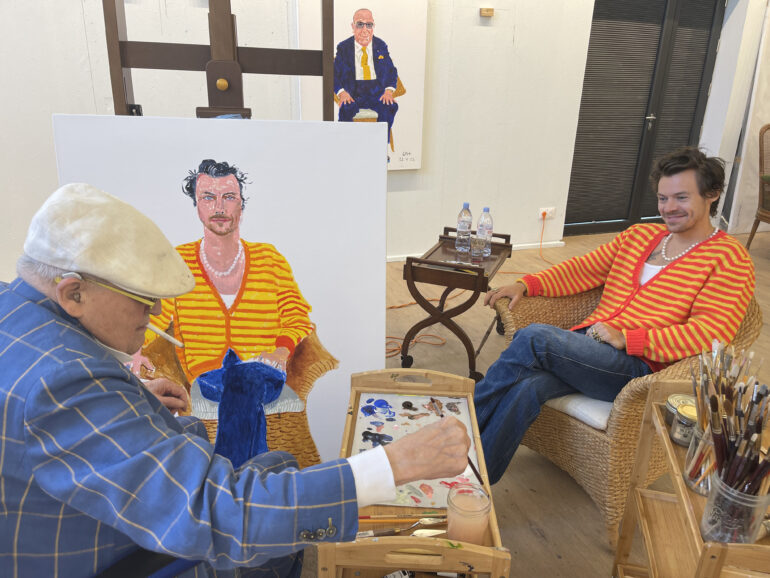London’s National Portrait Gallery, which reopened to much fanfare in June 2023 after an extensive renovation project, is staging a major exhibition of portraits by David Hockney who, despite relocating to the village of Beuvron-en-Auge in Normandy, has achieved an almost national treasure status in the UK, and never fails to draw huge crowds with his uplifting, life-affirming exhibitions.
‘David Hockney: Drawing from Life’ originally opened at the NPG in March 2020, but was forced to close after only 20 days due to the Covid pandemic. ‘David Hockney: Drawing from Life’ explores 6 decades of Hockney’s art through portraiture, including self-portraits and intimate portraits of his mother, friend and muse Celia Birtwell, his former partner and curator Gregory Evans, and master printer Maurice Payne. Hockney artworks created with pencil, pen and ink, crayon, printing and painting through to photographic collage, photoshop and the iPad are all featured.
The extensive exhibition includes more than 160 works from his earliest self-portraits made when he was a young student in Bradford, all the way through to his new Normandy series of portraits. Opening the exhibition are 2 important self-portraits connected by Hockney’s distinctive yellow tie – one dates back to 1954 and is a collage on newsprint of a young Hockney, the other is an acrylic on canvas from the new Normandy series.

In the final room of the exhibition a portrait of musician Harry Styles is exhibited for the first time, as part of the Normandy series of portraits of friends and visitors to Hockney’s studio in 2021 and 2021. Sitting for a coveted Hockney portrait is a rare privilege on a par with being captured on canvas by the late Lucien Freud, and the experience left a big impression on Styles.
Harry Style comments: “I’m in awe of the man with enough one-liners for a lifetime! David has been reinventing the way we look at the world for decades. It was a complete privilege to be painted by him.”
Hockney spent around 3 days on each of the Normandy studio portraits were, often working in silence and only stopping for lunch or a cigarette break. He painted from life directly onto the canvas, without any under drawing. The result is a series of portraits that not only capture the likeness of Hockney’s subject, but explore their inner psyche in a way that photographs cannot. Hockney comments: “A photograph is just an instant…don’t you think these are a lot more interesting than photos.”?
National Portrait Gallery Director Nicholas Cullinan commented at the press preview: “Of course, over the last 60 years, the artist’s experimentation with drawing has taken many stylistic turns. But really, this is an exhibition about the people that David returned to time and time again throughout his career. So of course, the familiar faces of Laura Hockney his mother – very tender and beautiful works – Celia Birtwell, who has been such an important muse and friend to David, Gregory Evans and Maurice Payne. And he would often use drawings of his subjects as a testing ground for ideas and models of expression, which eventually played out in his paintings.”

The exhibition includes a room decorated to Hockney’s longtime muse and friend – fashion designer Celia Birtwell. Celia’s room includes Hockney’s very first portrait he made of her in Paris in the 1960s a pen and ink drawing, a difficult medium that doesn’t allow for any mistakes and illustrates his skill as a draughtsman.
A highlight is “My Parents and myself”, a large oil on canvas from 1976 which Hockney never
finished, and still has masking tape and unfinished elements such as the chair his mother sits on. Hockney thought the painting had gone missing and rediscovered it in his Los Angeles studio when he was selecting artworks for “Drawing from Life”. A finished version from 1977 in the Tate Collection replaces the self-portrait of Hockney in the mirror with a reflection of Piero della Francesca’s 1448-1450 ”Baptism of Christ”.

Photo credit Lee Sharrock
Other highlights include Hockney’s coloured pencil drawings from his time in Paris in the early 1970s, which demonstrate the influence of Ingres (whose work he studied in the Musee du Louvre); the etching suite ‘A Rake’s Progress’ (1961-63), which he made after moving to New York City; and etchings ‘The Student: Homage to Picasso’ and ‘Artist and Model’, which show Hockney sitting at a table opposite Picasso, and at an art gallery admiring a bust of Picasso, demonstrating his influence on Hockney’s oeuvre.
Curator Sarah Howgate comments: “This exhibition really demonstrates what a master
draughtsman Hockney really is. It’s incredible to think that at 86 he produced a whole new body of work for this exhibition. As we began to install this exhibition he embarked on a new body of work. So he’s always working, he’s always enquiring and always looking.”



